HL-T: 1110 Sine Sweep Fatigue Analysis – Stress-Life
In this tutorial you will:
- Import a model to HyperLife
- Check that the FE result file contains a frequency response function (FRF) subcase with element stresses
- Select the SN module with a Sine Sweep loading type and define its required parameters
- Create and assign a material
- Create a sine sweep event
- Evaluate and view results
Before you begin, copy the file(s) used in this tutorial to your
working directory.
Import the Model
-
From the Home tools, Files tool group, click the Open Model tool.

Figure 1. -
From the Load model and result dialog, browse and select
HL-1110\bracket_SineSweep.h3d for the model
file.
The Load Result field is automatically populated. For this tutorial, the same file is used for both the model and the result.
-
Click Apply.
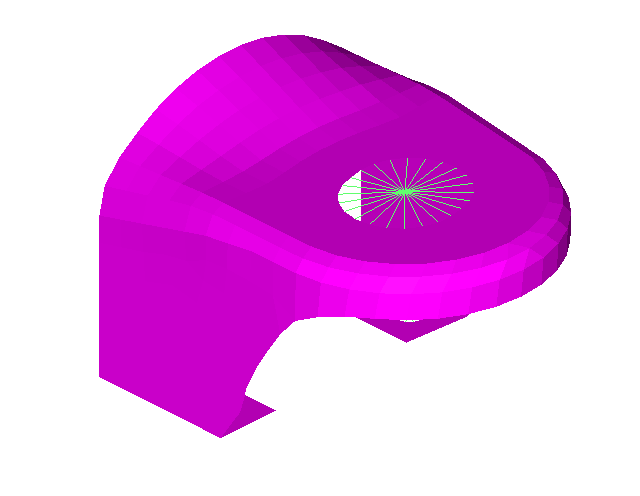
Figure 2.
Tip: Quickly import the model by dragging and
dropping the .h3d file from
a windows browser into the HyperLife
modeling window.
Check That the FE Result File Contains a Frequency Response Function Subcase with Element Stresses
-
From the Results Browser, click the second drop-down menu
and select Subcase 3 (03-Frf).
If the Results Browser is not open, click View > Browser from the menu bar.

Figure 3. -
From the View Controls toolbar, click
 .
The Contour panel opens.
.
The Contour panel opens. -
From the panel area, select Element Stresses
(2D & 3D) (t) (c) from the first Result type drop-down
menu.

Figure 4. -
Click Apply.
The model is contoured.
- Observe the element stress plot in the modeling window then click Clear Contour in the panel area.
- Exit the Contour panel.
Define the Fatigue Module
-
Click the SN tool.
The SN tool should be the default fatigue module selected. If it is not, click the arrow next to the fatigue module icon to display a list of available options.

Figure 5.The SN dialog opens. -
Define the SN configuration parameters.
- Select Uni Axial as the method.
- Select MPa for the FE model units.
- Enter a value of 0.9 for the certainty of survival.
- Select NONE for the mean stress connection.
- Select Worst for the layer selection.
-
Select Sine Sweep for the type of loading.
von Mises is automatically selected as the stress combination.Note: Only the von Mises stress combination is supported.
-
Select All Frequencies for the Number of
Frequencies.
This considers all the frequencies from the frequency response subcase.Note: Alternatively, User Input can be selected if a certain number of frequencies are to be considered between the first and last frequency, or Frequency Increment if frequencies from the frequency response subcase are to be selected based on increment.
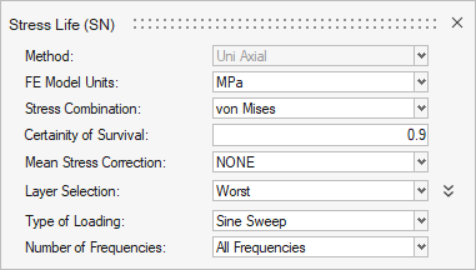
Figure 6. - Exit the dialog.
Assign Materials
-
Click the Material tool.

Figure 7.The Assign Material dialog opens. - Activate the checkbox next to the part new_bracket.
-
Create a new material.
- Click the My Material tab.
-
Click
 to create a new material.
to create a new material.
- Name the material Mat_SN_SineSweep.
- Set the Elastic modulus to 200000.
- Change the Input method to Slope-intercept,2-seg.
- Set Yield Strength to 180.
- Set Poisson's Ratio to 0.3.
- In the SN tab, set the Fatigue limit (FL) to 100.
-
Accept all other default parameters then click Plot &
Save.
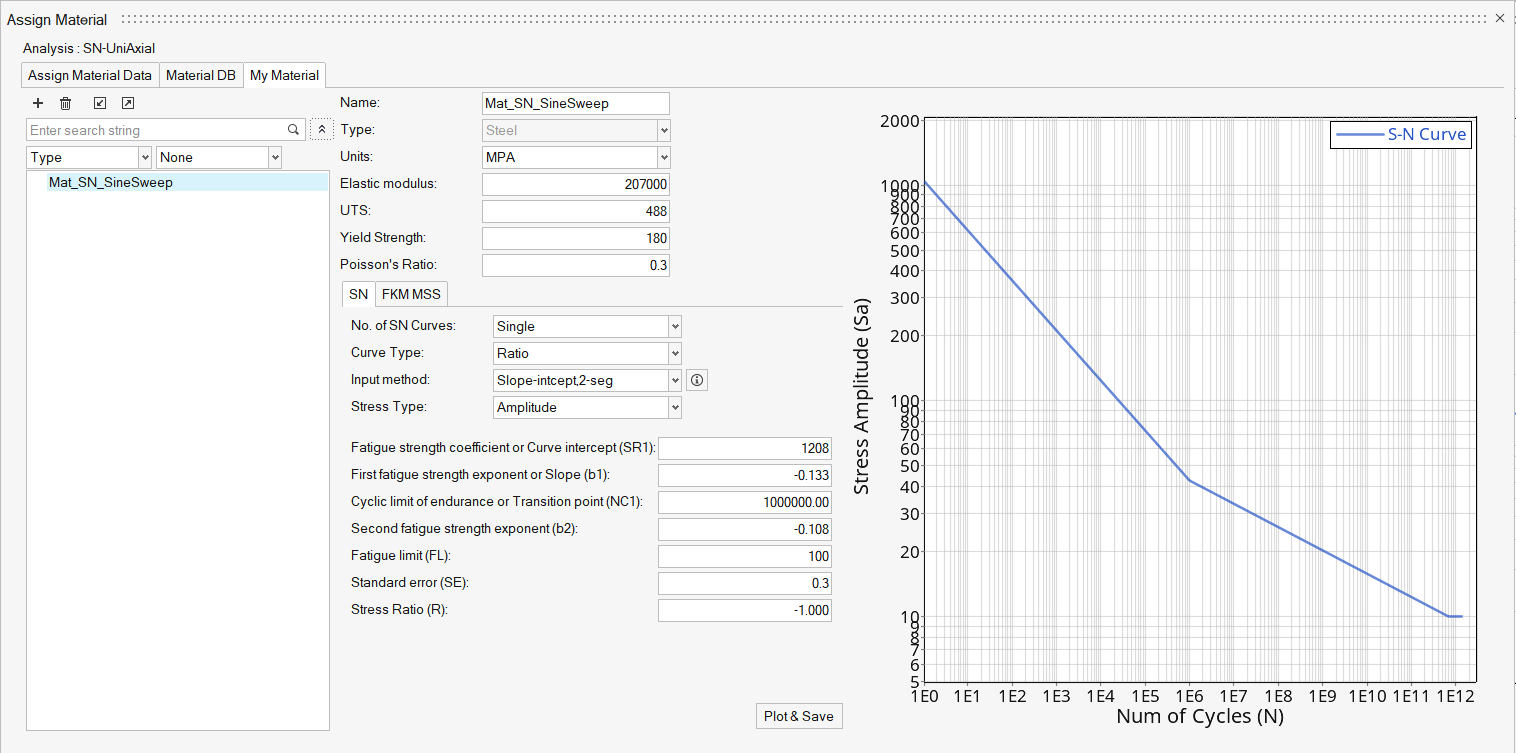
Figure 8.
- Right-click on Mat_SN_SineSweep and select Add to Assign Material List.
-
Return to the Assign Material Data tab and select
Mat_SN_SineSweep from the Material drop-down menu for
new_bracket.
The Material list is populated with the materials selected from Material Database and My Material.
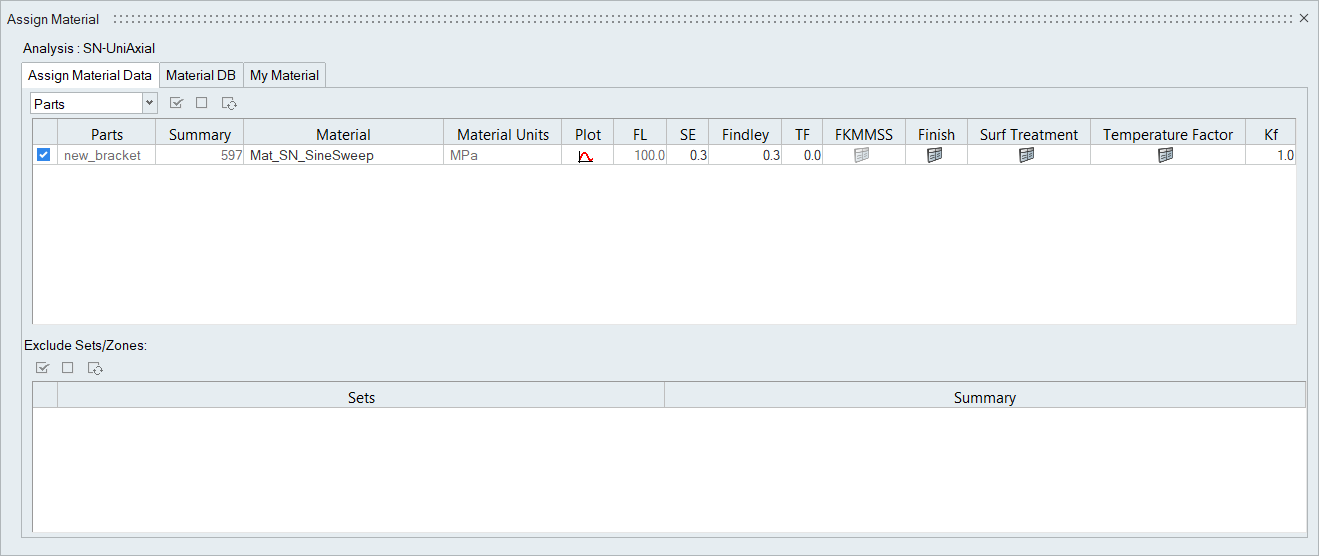
Figure 9. - Exit the dialog.
Create a Sine Sweep Event
-
Click the Load Map tool.

Figure 10.The Load Map dialog opens.By default, the Channel Type is set to Constant Load.
-
Click
 at the top of the dialog to
add the load case.
at the top of the dialog to
add the load case.
-
Set the Scale value of the constant load to 0.1.
This will scale the frequency response stresses used for the sine sweep calculations.Note: If the Channel Type is set to Variable scale, a Frequency vs Scale .csv file needs to be imported.
- Select both ConstLoad1 and Subcase 3 (03-Frf).
-
On the bottom half of the dialog, click
 to create an Event_1
header.
to create an Event_1
header.
-
Accept the default values used for the event then activate the
Event_1 checkbox.
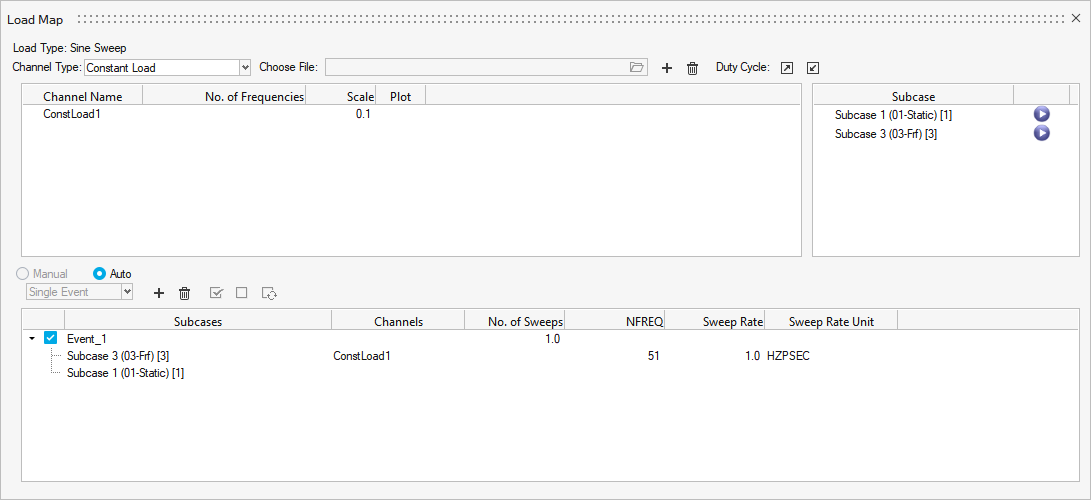
Figure 11. - Exit the dialog.
Evaluate and View Results
-
From the Evaluate tool group, click the
Run Analysis tool.

Figure 12.The Evaluate dialog opens.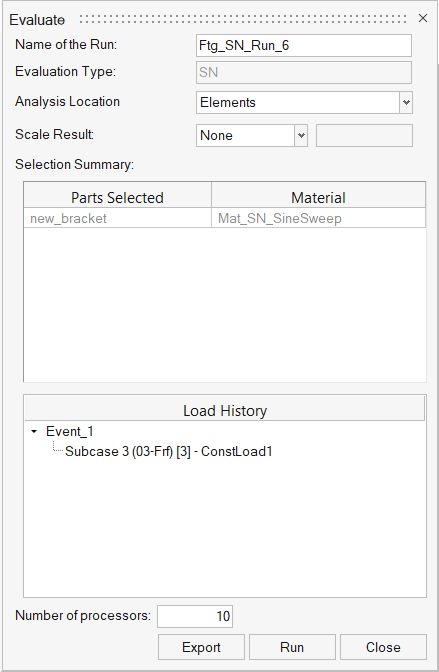
Figure 13. - Optional: Enter a name for the run.
-
Click Run.
Result files are saved to the home directory and the Run Status dialog opens.
- Once the run is complete, click View Current Results.
-
Use the Results Explorer to
visualize various types of results.
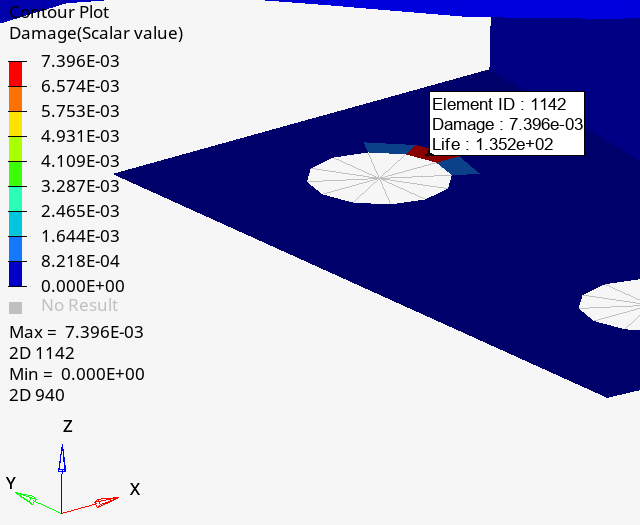
Figure 14.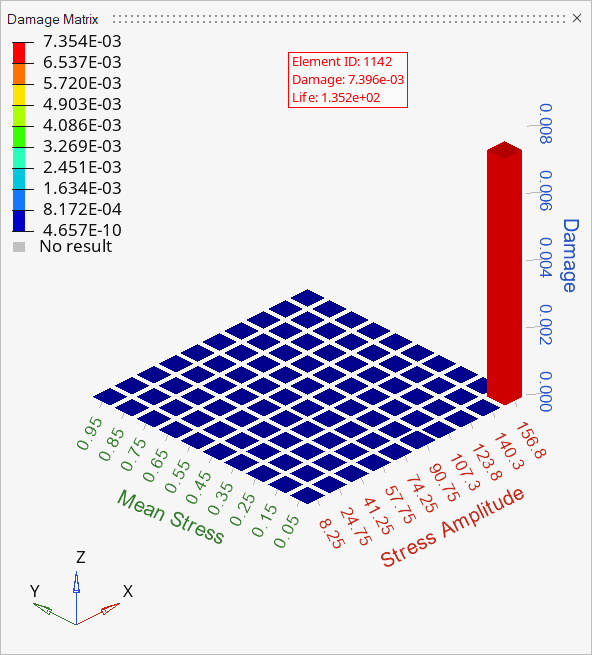
Figure 15.